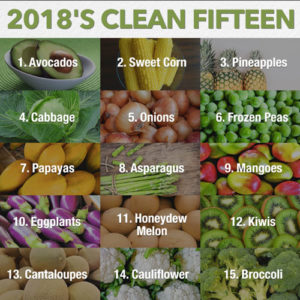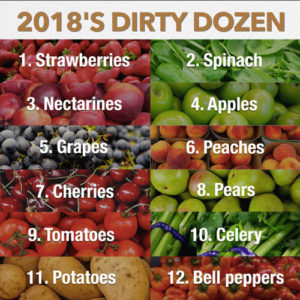Care about pesticide residues in your produce? EWG just released 2018’s Clean Fifteen (along with the Dirty Dozen).
Transcript:
Care about pesticide residues in your produce? EWG just released this year’s Clean Fifteen (along with the Dirty Dozen).
2018’ “Dirty Dozen” and “Clean Fifteen” are out. These lists, released by the Environmental Working Group, rank different fruits and vegetables according to pesticide residue. This year’s title for “cleanest” crop goes to avocados. Fewer than 1% of the samples tested positive for pesticides. Also among the cleanest are pineapples, cabbage, and onions. More than 80% of samples carried no residues.

On the other hand, strawberries, spinach and nectarines fared among the top 3 with the most pesticide residues. EWG sustains that certain pesticides pose severe health risks. Ranging from nervous system damage, to fertility problems. Organizations like The American Academy of Pediatrics advise parents to keep the Dirty Dozen in mind, in an effort to minimize kids’ ingestion of pesticides.
While care is certainly advisable, many argue that extreme precautions aren’t necessary. The average person isn’t consuming enough fruits and vegetables to begin with. Adding an extra barrier via fear of pesticides could only worsen the issue. As with everything, use your own judgement. If your finances allow it, purchase all organic. And if not, turn to the clean fifteen. It’s good to be wary of the dirty dozen, but don’t let it lower your intake of fruits and veggies, or mess with your peace of mind too much. At the end of the day, let’s just strive to do what we can!
Sources:
– “OUT NOW: EWG’s 2018 Shopper’s Guide to Pesticides in Produce”
– Dirty Dozen 2018 Full List
– “Most contaminated foods on 2018 Dirty Dozen List”
– “Strawberries top 2018’s Dirty Dozen list of fruits and vegetables”

